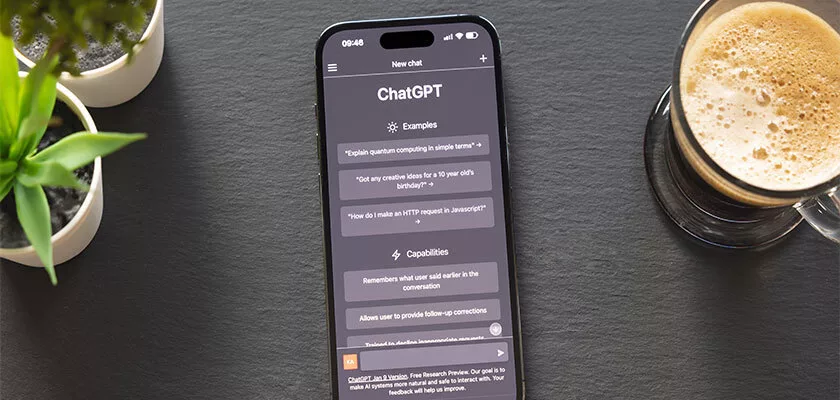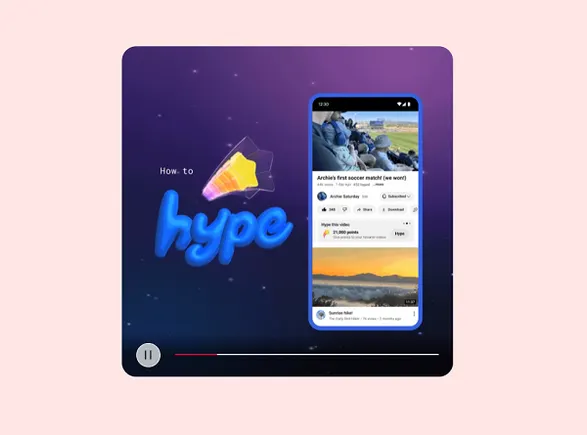ChatGPT Won’t Replace Your Marketing Team, But It Can Be a Useful Tool
On November 30, 2022, Chat GPT launched and took over with over one million users in its first week. The site has continued to see a rise in users over the past month, to an extent where the site...

On November 30, 2022, Chat GPT launched and took over with over one million users in its first week.
The site has continued to see a rise in users over the past month, to an extent where the site is so busy that it can not yet fully operate at its demand. Chat GPT is currently working on an update that is expected to release in February 2023 and this solution will allow for more users.
The interface of Chat GPT is rather straightforward to use; however, the concept of the technology behind it can be somewhat confusing for those new to how artificial intelligence (AI) works. Chat GPT is a large language model developed by OpenAI that uses transformer-based neural network architecture to generate human-like text. The AI tool can be used in a variety of ways, including translations, conversation and text completion.
The introduction of ChatGPT has left many questioning what it can mean for the future of many people’s jobs. Some believe that the tool will replace the need for humans in some positions; however, you still need someone to input dialogue into ChatGPT or it will not work. This dialogue needs to be specific and personalized once complete.
ChatGPT and other similar language models have the potential to impact a wide range of industries; however, one constant that remains is that humans are needed to make the language models operate.
Ways to Use ChatGPT
One way to use ChatGPT is for its natural language processing (NLP) with content generation. ChatGPT can be used to generate large amounts of text, such as news articles, product descriptions, and social media posts, which can help businesses and organizations save time and resources. ChatGPT is an efficient way to get the brainstorming process started when approaching a new topic to write on. By putting a simple prompt into the machine, it will generate multiple sentences, if not paragraphs of text. While it isn’t recommended to directly copy the response it gives you, you can use the answers as a good base to go off of.
Once given an answer from the AI, users can ask Chat GPT to reword the answer in multiple ways. For example, Chat GPT can turn any body of text into a post for social media. The machine will suggest a caption with hashtags and even emojis. The tool can even write responses in different tones. This can be extremely useful for professionals when needing to write copy in assertive or persuasive language, anything out of their comfort zone.
Another way that businesses are expected to adapt Chat GPT and other AI resources are through the use of chatbots and virtual assistants. Businesses are striving to enhance consumers’ experiences, and one way they are doing this is by having 24/7 virtual assistants available to answer questions and help assist the consumer with their buying process. Language models like ChatGPT can be used to power these virtual assistants and chatboxes.
The possibilities of automation are endless with ChatGPT and can be used as a great way to increase customer engagement. These language models are in many ways able to serve as a human by being able to understand common prompts being given to them. Once asked a question, the virtual assistant or chatbox is able to give back a response using natural language. Similarly, ChatGPT is being used to automate parts of the sales process. For example, the tool can provide information about products or services and assess potential leads. This can allow sales representatives to be more efficient in the sales process and allow them to focus on more important tasks. ChatGPT’s 24/7 capabilities allow for higher customer satisfaction which in turn leads to higher sales. Along with these features, ChatGPT can also write computer code and translate text from one language to another.
While ChatGPT has presented a lot of excitement for the future of AI, it has raised some concerns. One limitation of ChatGPT is that the responses it gives all come from the AI the engine has. Since it is being controlled by a set group of people, it has the potential to generate offensive or biased content in a way that is similar to how a human might write. Furthermore, because the model is only trained on a certain set of the given information, it does have the possibility of not always giving reliable or accurate information. ChatGPT does not have a way of verifying or fact-checking the information it generates, so it is important for a user to always verify the responses it gives. Like any piece of technology, it is important to consider the potential limitations and risks when using it.
Concerns with ChatGPT
ChatGPT also raises some ethical concerns in terms of privacy and misuse. ChatGPT and other language models require large amounts of personal data to train, which has raised concerns about the privacy of individuals whose data is used. Furthermore, ChatGPT’s ability to generate human-like text raises concerns about its potential misuse for impersonation, phishing, or other malicious activities.
There are also concerns with regard to academic integrity and intellectual property. OpenAI, the company behind ChatGPT, holds the copyright to the model’s architecture, training data, and the code used to train it. However, the question of ownership of the generated response by ChatGPT is more complex. As of now, the copyright for text generated by AI belongs to the creator of the AI, unless there is a specific agreement stating otherwise.
One of the biggest concerns with ChatGPT is the possibility of the model being used to automate tasks that should be done by humans, such as content moderation and customer service. Many are worried that ChatGPT will lead to job loss, and are therefore resistant to the tool. However, it is important to understand that in order for ChatGPT to work, there has to be a human telling it what to do. For example, the machine can come up with a caption for an Instagram post, but it will not know what to say unless it is given some form of instruction. While the tool may be able to replace some jobs in terms of automating responses in customer service, these responses will still need to be monitored by a human.
As technology continues to advance, so will the capabilities of AI. ChatGPT will not be for everyone, but it is a great tool to have whenever you need help with content creation or more. The possibilities are endless for what the machine can do and the best way to figure out how it can benefit you and your business is by trying it yourself.

 Fransebas
Fransebas 









![How to Create an Editorial Calendar [Examples + Templates]](https://blog.hubspot.com/hubfs/marketing%20team%20in%20need%20of%20editorial%20calendar%20template%20to%20simplify%20content%20planning.jpg#keepProtocol)
![How Apple iOS 15's Impacting Email Marketers [New Data]](https://blog.hubspot.com/hubfs/apple%20ios%2015%20email%20privacy%20impact%20data.jpg#keepProtocol)























